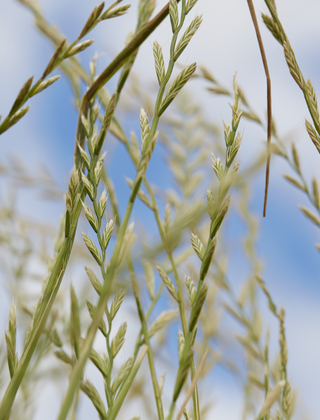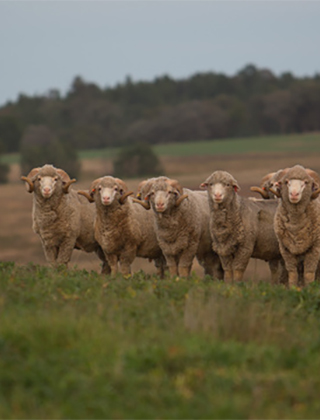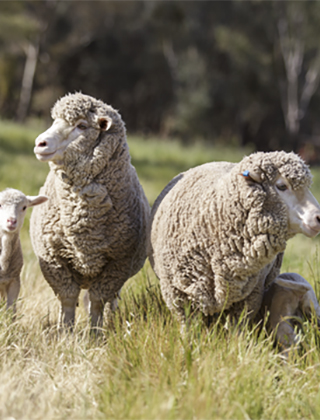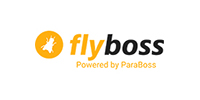Optimising Merino ewe survival at lambing
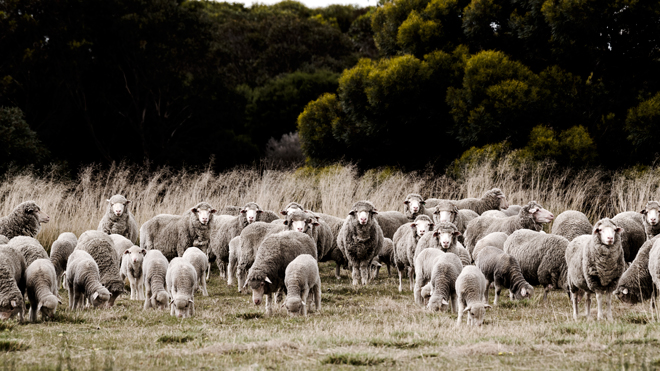
To help optimise Merino ewe survival in the lead up to, during, and after lambing (the periparturient period), an AWI funded project has examined the prevalence and causes of Merino ewe periparturient mortality on-farm and begun trialling practical intervention strategies to reduce it.
As part of a four-year project funded by AWI and MLA, a team of researchers and veterinarians are working with Merino producers in key Australian wool-producing regions on a project to investigate ways to reduce rates of ewe mortality during the periparturient period.
Once the research is complete, the project will develop best practice management extension material to help producers optimise their ewes’ survival.
“With ewes representing the most productive unit in a flock, and Merino ewes making up about two-thirds of Australia’s breeding ewe flock, it is important for the Australian sheep and wool industry to optimise the health and survival of these ewes,” said AWI General Manager, Research, Bridget Peachey.
“We know that ewe losses tend to occur mainly during and around lambing, so this project aims to trial and develop cost-effective and practical intervention strategies to increase ewe survival rates. Advice on best practice will be developed and made widely available for adoption by Merino sheep and wool producers.”
Examination of ewe mortality
The project began by conducting a literature review of the causes and rates of ewe mortality during the lambing period, plus a national survey of more than 200 producers which helped gather further information about ewe mortality across the country.
The project, then began working closely with and collected on-farm ewe mortality data from 42 participating commercial Merino businesses in seven regional groups across WA, SA, Victoria and NSW.
Producer-reported data and veterinary investigations were used to determine the pattern of periparturient mortality across the farms as per the producers’ regular management practices.
All the producers kept a farm diary to document ewe mortalities over the lambing season, including reporting cause of death if known. Veterinarians visited host-farms to conduct autopsies on ewes found dead to determine the cause-of-death at key stages of the lambing season.
The three most frequently diagnosed causes of death were dystocia (a prolonged or difficult birth), hypocalcaemia (milk fever), and metritis related septicaemia (infected uterus causing blood poisoning), either as sole or contributing causes. Comorbidities, that is co-occurring conditions, were identified.
The relative importance of causes of death varied between regions and farms. Less common diagnoses, but regionally or farm-significant diagnoses, included pregnancy toxaemia, vaginal prolapse, and ruminal acidosis.
Trialling intervention strategies
The second phase of the project is now trialling on-farm practical intervention strategies to reduce Merino ewe mortality. The intervention strategies have been informed by the literature review, the data from the first phase of the project, observations by the project veterinarians, and producer preference.
Of the 42 participating Merino businesses in the first phase of the project, 14 businesses (two in each of the seven regional groups) will trial an intervention strategy during the 2025 lambing season whilst guided by an appointed project veterinarian.
The trial will be conducted in a Producer Demonstration Site (PDS) style with observer producers following the trials in each region.
Producers will keep a similar farm diary to what they did in the first phase of the project to document the cause of death of any deceased ewes in the trial. The project veterinarian will also conduct a post-mortem to confirm the cause of death.
In all cases there will be a ‘treatment mob’ where the intervention strategy is applied, and a ‘control mob’ where the intervention strategy is not applied, i.e. they are managed by the producer as per their regular management practices.
The intervention strategies include:
- Calcium supplementation during periparturient period. The likely focus will be on the delivery method of the supplement (e.g. mixed in with grain, trail fed, lick feeder).
- Utilise condition scoring and weight of ewes prior to lambing, and draft out lighter ewes to allow differential management through feeding in a containment feeding system.
- Utilise condition scoring of ewes at joining, scanning and weaning, and draft them into groups to allow for differential feeding to reach target condition at lambing.
- Vitamin E supplementation. The focus will be on ewes in a containment feeding system or those being grain-fed on dry pasture in the lead up to and during lambing. This will be used in conjunction with condition score monitoring.
- Vitamin ADE supplementation pre-lambing, using a commercial injectable supplement.
Any supplements given will be commercial products and administered according to label directions.
The project will also quantify the economic impacts of Merino ewe mortality and intervention strategies at farm and industry levels to help accelerate industry adoption of best practice management.
The project team consists five veterinary businesses (Well Stock, Millicent Veterinary Clinic, Apiam Animal Health, and AHN Consulting), three universities (University of Melbourne, Murdoch University, and Central Queensland University), a communications specialist (Hot Tin Roof Communications), and project coordinators Pinion Advisory.
More information: Esmée de Looff, edelooff@pinionadvisory.com
This article appeared in the Spring 2025 edition of AWI’s Beyond the Bale magazine that was published in September 2025. Reproduction of the article is encouraged.






